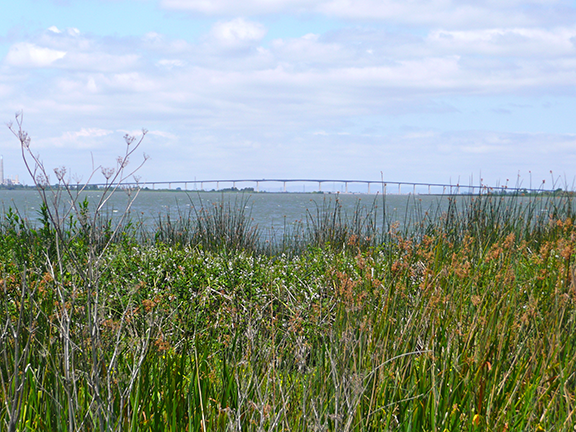Prior to starting my fellowship with the Delta Science Program, my interests lay in the ocean where I focused on fisheries and conservation biology. Although anthropogenic (a.k.a human caused) impacts affect even the most far-flung wild places left on the planet, they often work in insidious and unseen ways. For instance, the cascading effects resulting from greenhouse gas emissions can be seen in changes global climate patterns, the melting of ice sheets, and ocean acidification, but remain a remote concept for many. Conversely, the Sacramento-San Joaquin Delta is a visual patchwork of habitats; a highly modified ecosystem where you can succinctly bear witness to the history of human impacts.
 Despite growing up in the Bay Area in close proximity to the Delta, I didn’t have a very clear understanding of the challenges faced this region. Dozens of state and federal agencies are tasked with the difficult tasks of improving an ecosystem that exists on the margin, ensuring the longevity of protected species, and maintaining water supply reliability for much of California’s human population. During my time as a Sea Grant fellow, I was part of a workgroup that reviewed completed levee-related habitat enhancement and mitigation projects in the Delta based on interview's with practitioners, cost analyses, evaluation of monitoring reports, and a very extensive literature review.
Despite growing up in the Bay Area in close proximity to the Delta, I didn’t have a very clear understanding of the challenges faced this region. Dozens of state and federal agencies are tasked with the difficult tasks of improving an ecosystem that exists on the margin, ensuring the longevity of protected species, and maintaining water supply reliability for much of California’s human population. During my time as a Sea Grant fellow, I was part of a workgroup that reviewed completed levee-related habitat enhancement and mitigation projects in the Delta based on interview's with practitioners, cost analyses, evaluation of monitoring reports, and a very extensive literature review.
Habitat enhancement should be focused in areas where it can provide the most benefit to native wildlife. Native anadromous fishes like Chinook salmon and steelhead have to swim a gauntlet of leveed channels, avoid water diversions and threats from a burgeoning population of invasive predators during their seaward migration. With the extensive loss of wetland habitat, migratory birds must now rely on flooded agricultural lands and artificial managed wetlands to support them along their journey. The process of looking back at the success of past projects has served to highlight the management and restoration challenges this region faces in the future.
The biggest skill that I have been able to hone has definitely been my synthesis and science communication skills. Learning how to write for a policy audience is a major adjustment for someone coming out of the academic world. While this process is more difficult than you might imagine, it is essential tool to gain stakeholder support and influence policy decisions. I feel that my perspective is larger now and I have broadened my view of what realms of the science/policy patchwork might be best for me.
Written by Jahnava Duryea



